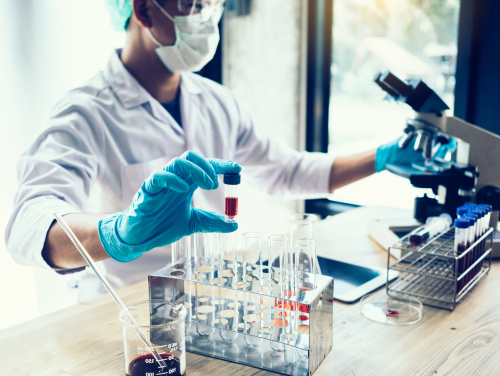Combining a new blood-based diagnostic test called Videssa Breast with breast imaging can improve breast cancer detection, reduce false diagnosis rates, and avoid unnecessary breast biopsies in women older than 50 with a moderate risk of cancer, according to a study.
Provista Diagnostics, developer of Videssa Breast, announced the results of its latest study that clinically validates the test’s performance, suggesting its use could have avoided approximately 45% of biopsies in this age group.
The study, “A Non-Invasive Blood-Based Combinatorial Proteomic Biomarker Assay to Detect Breast Cancer in Women over age 50 with BI-RADS 3, 4, or 5 Assessment,” was published in the journal Clinical Cancer Research.
Tests that complement breast imaging are needed, particularly when clinical assessment is challenged by abnormal or difficult-to-interpret mammograms, such as those in women with dense breast tissue. In these cases, it is difficult for clinicians to decide whether to “wait and see” or to proceed with more advanced imaging or biopsy.
But Videssa can bypass these issues because, rather than relying on imaging, it detects breast cancer by identifying multiple breast cancer-specific biomarker proteins in the serum.
With a simple blood draw, the test can provide guidance on whether further diagnostic procedures may be warranted or provide assurance that a patient likely does not have breast cancer, Provista says.
According to the company, the test has performed positively in two clinical studies (NCT01839045, NCT02078570) collectively enrolling 1,350 women from 25 to 75 years old.
A proof-of-concept study was the first to demonstrate the test’s promising results; a subsequent study showed its ability to better inform clinicians about patient follow-up when combined with breast imaging for women younger than 50.
The primary goal of the current study was to determine Videssa’s performance specifically in post-menopausal women, because serum biomarkers can be changed with the onset of menopause and the use of hormone replacement therapy.
For this purpose, researchers clinically validated the test in women ages 50-75 with abnormal or difficult-to-interpret breast imaging and a moderate risk of cancer, who were enrolled in the Provista-002 study.
Serum was collected prior to breast biopsy to preserve the pre-diagnosis serum biomarker environment and provide a realistic clinical setting. Subjects were followed for six to 12 months.
Samples were split into two arms, a training group, with 469 women who had an 18.5% incidence of breast cancer, and a validation group, with 194 women who had a 19.6% incidence of breast cancer.
Videssa’s serum biomarker results combined with clinical data of patients, including age, family breast cancer history, in the training group were used to “teach” an algorithm how to accurately distinguish positive from negative breast cancer cases.
The algorithm yielded diagnosis scores that predicted a person’s likelihood of having cancer with a 94% sensitivity and 97% negative predictive value, referring to its accuracy in identifying benign cases.
The final algorithm performed equally well when tested independently and blindly in the validation group, with a 95% sensitivity and negative predictive value of 97%. This “can offer patients and physicians a high degree of assurance that a negative Videssa Breast outcome indicates an absence of breast cancer” also in post-menopausal women, the researchers wrote.
“Videssa has again demonstrated it’s a reliable and accurate method of detecting breast cancer when used in combination with mammography,” Gary Altman, CEO of Provista, said in a press release.
Comparing the total number of women who underwent biopsy with that recommended by the Videssa-informed algorithm, researchers estimate that if Videssa’s results had been incorporated into the clinical workflow before biopsy, approximately 45% of biopsies might have been avoided.
“Videssa Breast is a serum biomarker-based lab developed test (LDT) that can be used in conjunction with breast imaging to determine appropriate follow-up, potentially sparing the time, costs, and stress associated with false-positive breast imaging/biopsies,” the team concluded in the study.

